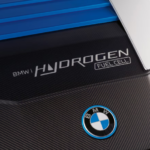Once an expensive curiosity, solar is now cost competitive and set to go lower. It couldn’t come at a better time.
As the clean electricity source surges in popularity, it’s seeing a reduction in prices. The price drop has been enough to undercut coal in both China and the United States.
The International Renewable Energy Agency, in an all-encompassing report last month, explained that solar alone could lead to a 21 percent reduction in prices as early as 2050.
Solar has seen a dramatic drop in price. Research from MIT shows that over the past 40 years, the price of photovoltaic modules have dropped by 99 percent.

India is now the lowest-cost producer of solar power globally, according to a report by the International Renewable Energy Agency (IRENA).
The IRENA report titled ‘Renewable Power Generation Costs in 2018’, revealed that the total installed costs of utility-scale solar PV in India is as low as $793 per kilowatt (kW) in 2018 which is 27 per cent lower than for projects commissioned in 2017.
Canada has the highest cost at $2,427 per kW, according to the list published by IRENA.
The report pointed out that renewable energy sources have witnessed cost decline globally. IRENA analysed eight major PV markets from 2010 to 2018.
These countries include China, France, Germany, India, Italy, Japan, the UK and the US. From the analysis, IRENA concluded that costs have dropped by 80 per cent in India.
The latest IRENA report shows how all this could add up to a greener future. It suggests that solar could account for 25 percent of global electricity by 2050, the second-largest source just behind wind.
When mixed with other efficiency savings, that could reduce emissions by 70 percent against 2020 levels.
These cells may not look like the traditional photovoltaic cells. Tesla has been developing its Solar Roof, automakers are exploring cells on cars, and researchers are also experimenting with transparent windows.
Scientists are even looking at solar paint that comes in cans.
Reference- Inverse, DownToEarth, MIT website






